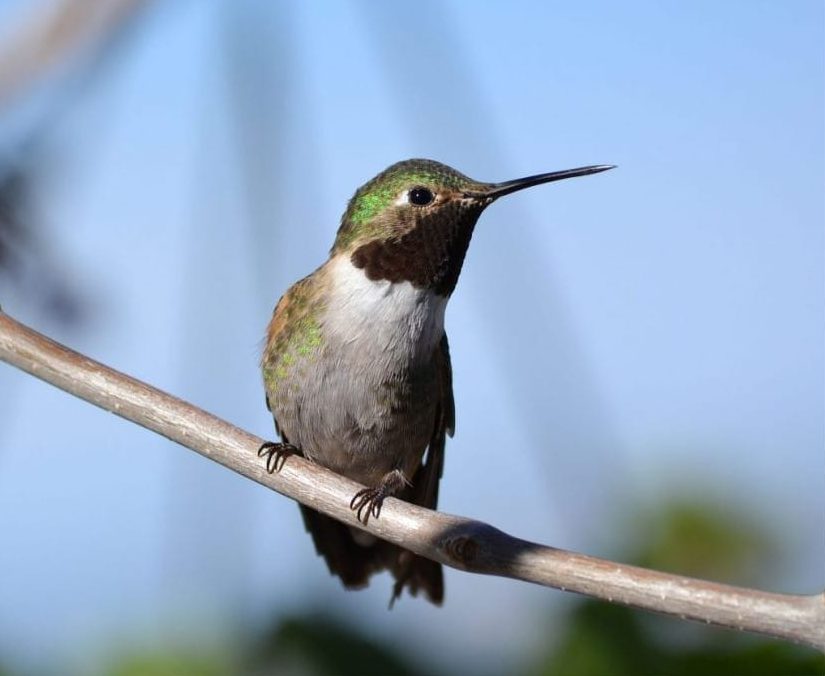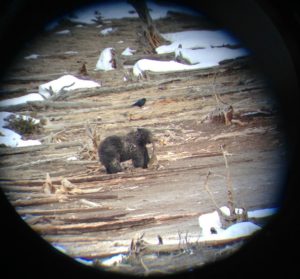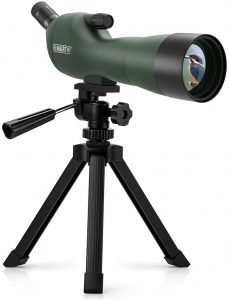Welcome to our article about spotting scope uses! Before we get into the many functions that a spotting scope can serve, let’s first discuss what a spotting scope actually is, and why you might want to invest in one in the first place.
Table of Contents
Spotting Scope Uses – Introduction
A lot of people don’t know the benefits they would gain if they added a spotting scope to their collection of optics.
The unique abilities of a spotting scope could be beneficial to anyone that does outdoors-related activities, especially things related to wildlife.
If you don’t know, spotting scopes are basically telescopes but they are used for looking at the earth around you instead of the cosmos.
They are small, light, and portable, rather than big and heavy like telescopes.
Spotting scopes are often overlooked because of binoculars. People assume that a pair of binoculars is equal to a spotting scope, only more portable, so they refuse to buy one.
The problem is, that isn’t true.
Spotting scopes give you much more viewing distance and glass clarity than binoculars do.
They are also much more favorable in low light, mostly due to their bigger objective lens (the big lens on the front of the scope, where your eye doesn’t rest).
People often ask me what spotting scopes are used for.
I can see why they ask this, spotting scopes do kind of look pointless at first glance because, “Why not just use binoculars?”.
In this article, I will be covering what spotting scopes are used for.
The uses of spotting scopes that I will be covering include:
- Hunting
- Birding
- Observing Wildlife
- Target Shooting
- Casual Astronomy
- Surveillance
A Helpful Tip for Spotting Scope Users
DO NOT buy a cheap tripod for your spotting scope. Cheap tripods that shake in the wind can nullify the greatness of a high-quality spotting scope!
So, what are spotting scopes most commonly used for?
Here are the activities spotting scopes are most commonly used for:
Spotting Scope Use #1: Hunting
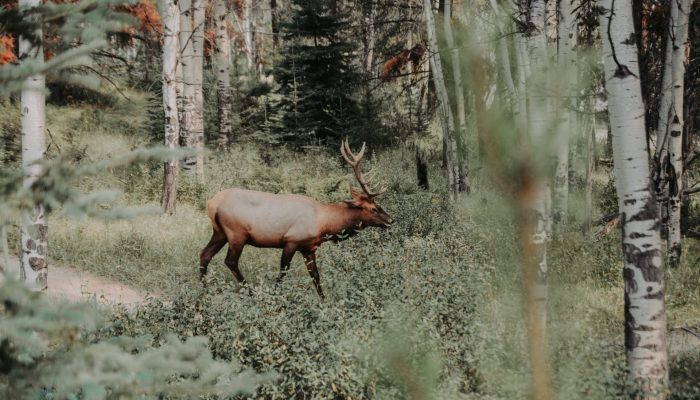
If you are a hunter, you know that seeing your prey can be pretty tough. Especially if you are hunting in challenging conditions, such as heavy rain or snow.
When you are trying to confirm that it is your prey that you see (and not a tree), nothing helps more than a high-quality spotting scope.
Should I Use Binoculars or a Spotting Scope for Hunting?
At first glance, you might think a hunter would be better off using a pair of binoculars than a spotting scope. In some hunting situations, this is the case.
The best time to use binoculars is when you are hunting on foot because they have a big advantage over spotting scopes in the mobility department.
So when would you use a spotting scope? That’s easy. When you’re in a stand.
Spotting scopes can help greatly when they are used from a stand because they allow you to see very long distances; plus their glass clarity is amazing at those distances, especially compared to binoculars which are usually only clear for short distances.
Trying to tell one animal apart from a herd? Or trying to decide if what you’re looking at is just a waving tree branch? Binoculars won’t help with this because they are too fuzzy when magnified for you to see a clear picture.
On the other hand, this is what your spotting scope excels at.
Take a quick look into the spotting scope, aim your shot, and fire.
No more questioning if you truly see that deer or not.
Conclusion
A spotting scope can greatly improve a hunter’s chance of going home with fresh meat.
As I mentioned earlier, a lot of hunters overlook the spotting scope because they don’t see its value, but I advise you to get one and see for yourself.
When I started using spotting scopes during my hunting trips, I was amazed.
I went from constantly questioning whether I saw a deer or not to being able to know 100% what I was looking at every time.
If you are looking for a spotting scope that will never let you down in the field, try this one.
It is one of my all-time favorites, hence why I have been using it for years on hunting trips (note: I am referencing to the 100-45° version of this scope. A few of the other versions of it are good too, but the 100-45° is by far the best).
Spotting Scope Use #2: Birding
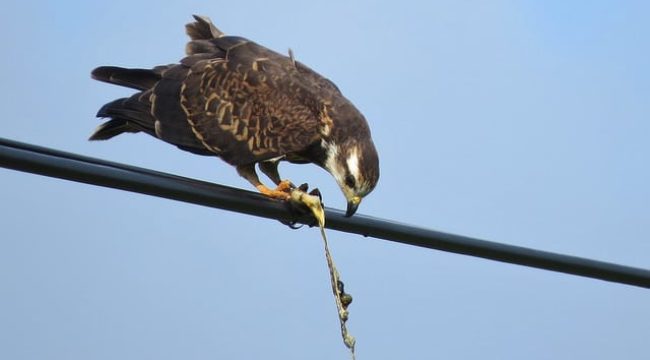
Spotting scopes are undeniably the best instrument for birding.
Although a good birding scope isn’t cheap, if you want to be a birder you will have to have a spotting scope eventually.
If you know anything about birding, you know that birders keep a log of the birds that they spot.
That is why spotting scopes are so great for birders, because their glass clarity allows them to recognize birds that are far, far away.
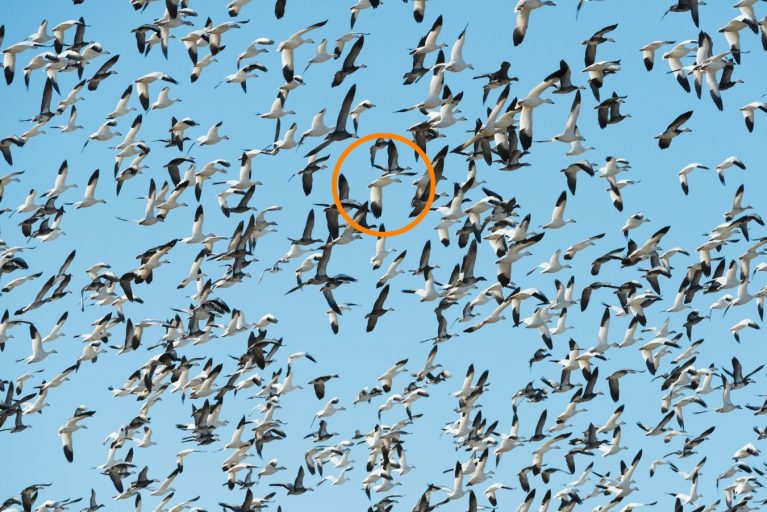
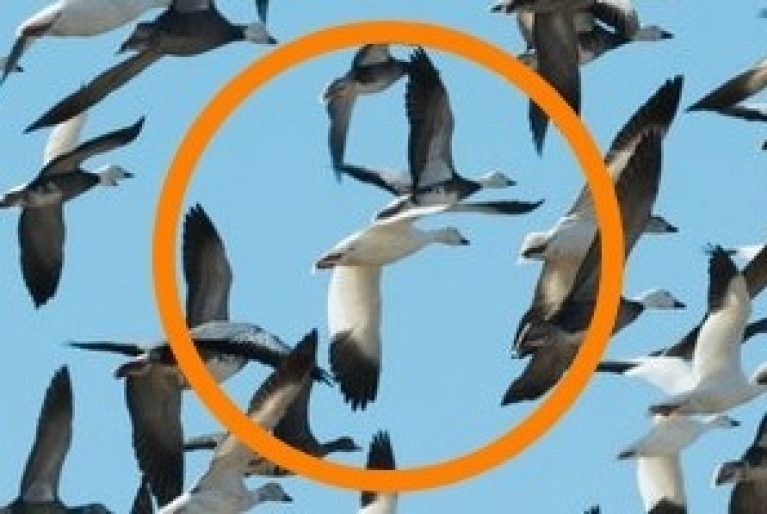
Digiscoping
Imagine seeing an oddly familiar bird from across the lake. You zoom in on it, not knowing what to expect, but you have your hopes up. You spot it. It is the incredibly rare bird your friends have been discussing for years.
There is a worry, though. How could you prove to your friends that you spotted this bird?
With a process called “digiscoping.”
Digiscoping is the act of putting a camera to the lens of your spotting scope and taking a picture.
And don’t forget, if you do spot a rare bird, don’t just show it to your friends.
Have it framed and put it on your wall for a pretty picture and a good memory.
Conclusion
Any birder that desires to be competent must have a spotting scope.
Also, if you are a birder don’t buy a scope under one-hundred dollars. It is a waste of money, because no manufacturer can produce one that cheap and equip it with even somewhat-decent lenses.
If you are a birder that wants to gain an edge on your friends (or competitors), check out this scope.
It is one of the best value spotting scopes on the market for beginner-level birders.
Spotting Scope Use #3: Viewing Wildlife
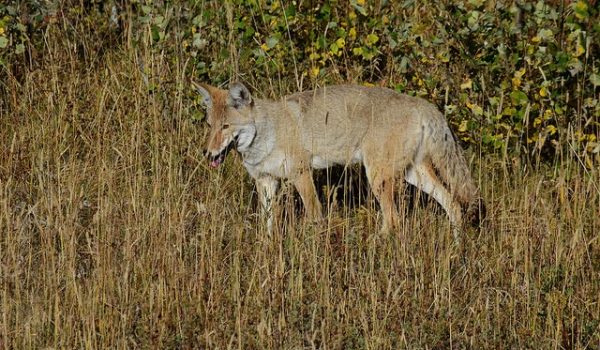
Spotting scopes are the perfect optic for stalking wildlife from a distance.
The average spotting scope is made to zoom up to sixty times what the naked eye can see, so if you want to spy on animals from far away, you can easily do it with a spotting scope.
Aren't Binoculars Good for Observing Wildlife?
The short answer is yes, binoculars are good for observing wildlife.
But, keep in mind that binoculars rarely zoom beyond about 25x.
If you want to remain in one spot while you observe wildlife, a spotting scope will be a better fit for you because they have 60x magnification power, compared to the average 20x of binoculars.
Also, spotting scopes generally produce clearer images than binoculars, so a spotting scope is far more likely to allow you to clearly see the details of what you are looking at.
However, spotting scopes have the disadvantage of a low field of view (FOV). Binoculars have a wider FOV than spotting scopes.
This is because spotting scopes are mainly used to look at the animal AFTER you have already found it, and binoculars are used to look FOR the animal.
My Trip to Yellowstone
I went to Yellowstone National Park on a vacation this summer, and luckily, I brought along my wildlife spotting scope.
If you don’t know anything about Yellowstone, I can tell you that there are a lot of these two things; wildlife and driving.
Everything you want to see in Yellowstone is about four hours apart (at least it feels like it).
There is an upside to all of the driving though, as you see tons of wildlife between your destinations.
However, even though you will see a lot of wildlife, it is often across a river, or maybe back in the forest, or perhaps at the bottom of a canyon.
In those situations, my spotting scope came in handy big time.
Here’s an example. At a point during one of my long, three hour drives, I was lucky enough to spot a grizzly bear on the other side of a river.
So, I stopped and looked at it for a while through my spotting scope.
When looking through my spotter, it was like the grizzly was right next to me. I could see it in plain sight, so close and detailed that it was almost scary. Lucky for me, it wasn’t actually right next to me.
Also, if you want to be able to mount and use a spotting scope from the comfort of YOUR CAR, read this article: “The 4 Best Window Mounts for Your Spotting Scope“.
I also used the spotting scope for tons of other far away wildlife, like bison.
Point is, my spotting scope probably made my trip to Yellowstone two times better.
It was a good investment by all means.
Conclusion
So basically, spotting scopes are like high powered monoculars that you set on a tripod. They can zoom to really high magnifications, which makes them great for viewing wildlife.
I really like this spotting scope, as you can tell because I listed it as one of my favorite birding scopes as well, and it is the one I used in Yellowstone.
It is pretty much just a solid all-around spotting scope. So, if you want a high-quality wildlife spotting scope that won’t cost you too much, check this one out.
Spotting Scope Use #4: Target Shooting
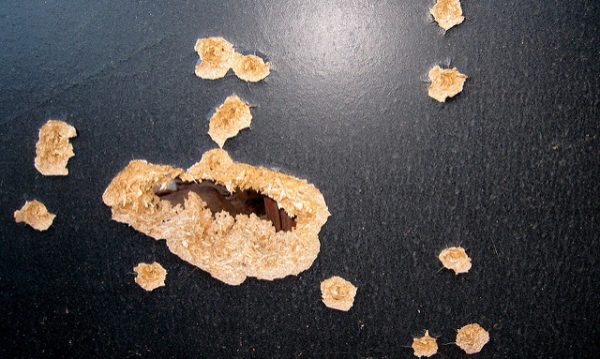
This one is kind of self-explanatory. Target shooters often use spotting scopes because it allows them to see their bullet holes in their targets without them having to get up and walk to them.
Spotting scopes work really well for target shooting because they are clear at high magnifications and can focus heavily on a specific point.
How Much Should You Spend on a Target Shooting Spotting Scope?
Don’t spend too much on a spotting scope if you are only using it for target shooting at low distances.
You can find a good target shooting scope for about $100 if you are looking to use it only under 100 yards.
Target shooting spotting scopes don’t have to be fancy, they just have to work well enough to allow you to see your bullet holes in the paper.
Conclusion
In general, people try to save as much money as possible on target shooting spotting scopes.
You don’t need super high-quality glass for a target shooting scope.
As long as you can see the bullet holes in your target, your target shooting spotting scope is fine.
When you are looking for a target shooting spotting scope, the most important factor is your intended distance.
Are you going to use it for 100 yards? 200 yards? 300 yards?
The longer the distance the higher the price goes, so be prepared for that.
If you want a guide on choosing a spotting scope for your intended target distance, read this article.
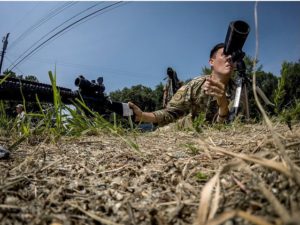
Spotting Scope Use #5: Casual Astronomy
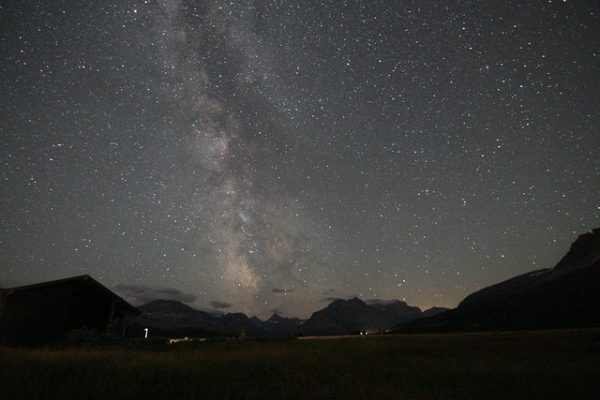
While your best choice for astronomy is definitely a telescope, spotting scopes can also be used.
The main reason people use spotting scopes for astronomy is to digiscope the moon, sun, or stars.
They can also be used for casually looking at stars or constellations, but you won’t see much detail unless you use an actual telescope.
Downsides of Astronomy With Spotting Scopes
There are quite a few disadvantages of astronomy with spotting scopes when comparing to telescopes.
First of all, spotting scopes have awkward viewing angles when you are looking straight up.
After a while, it gets hard to judge in which direction you’re aiming.
A straight spotting scope with no curve in it can counter that, but those aren’t as common as curved ones.
Spotting scopes also have a lower field of view than telescopes, so you can only see a little piece of space at a time.
If you can look past these issues, a spotting scope will be fine for your taste.
Conclusion
Overall, I would say spotting scopes can be good for use as mini, portable telescopes.
You can also use them to casually view the sky at day or night.
If you are serious about astronomy though, I suggest getting a telescope.
If you don’t know what telescope to buy, or if you’re looking for more information on telescopes, check out our article about the Best Telescopes for Home Use.
Spotting Scope Use #6: Surveillance
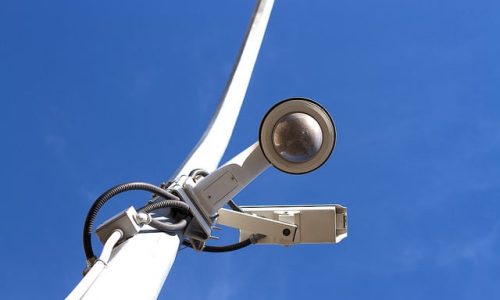
Last but not least, we have surveillance.
When I say surveillance, I mean setting up your scope in a certain position and then watching the position through the scope.
Police often use this tactic when they are expecting people (criminals) to arrive at certain places.
What Qualifies as a "Surveillance" Scope?
A surveillance scope needs to be light, portable, and small.
It also needs to be 15x magnification at the minimum, to be better than or equal to binoculars.
Surveillance scopes are designed to be moved around a lot.
Carrying a surveillance spotting scope with you should allow you to quickly set up at a location and watch a position from far away.
Conclusion
Surveillance spotting scopes are mainly used by the police. They can also be used by mobile hunters.
Conclusion
That wraps up Optics Empire’s list of spotting scope uses.
We hope you found this article helpful! If you did, then don’t forget to share it with your friends, your family, or whoever else you wish to share it with!

About The Author:
Hi! I’m Will Scott, the author of this post. I’m an outdoor enthusiast with over 10 years experience. I love trying out new gear and reviewing it so that other adventurers can get the most out of their experiences. I hope you’ve found my website informative, educational and helpful.

